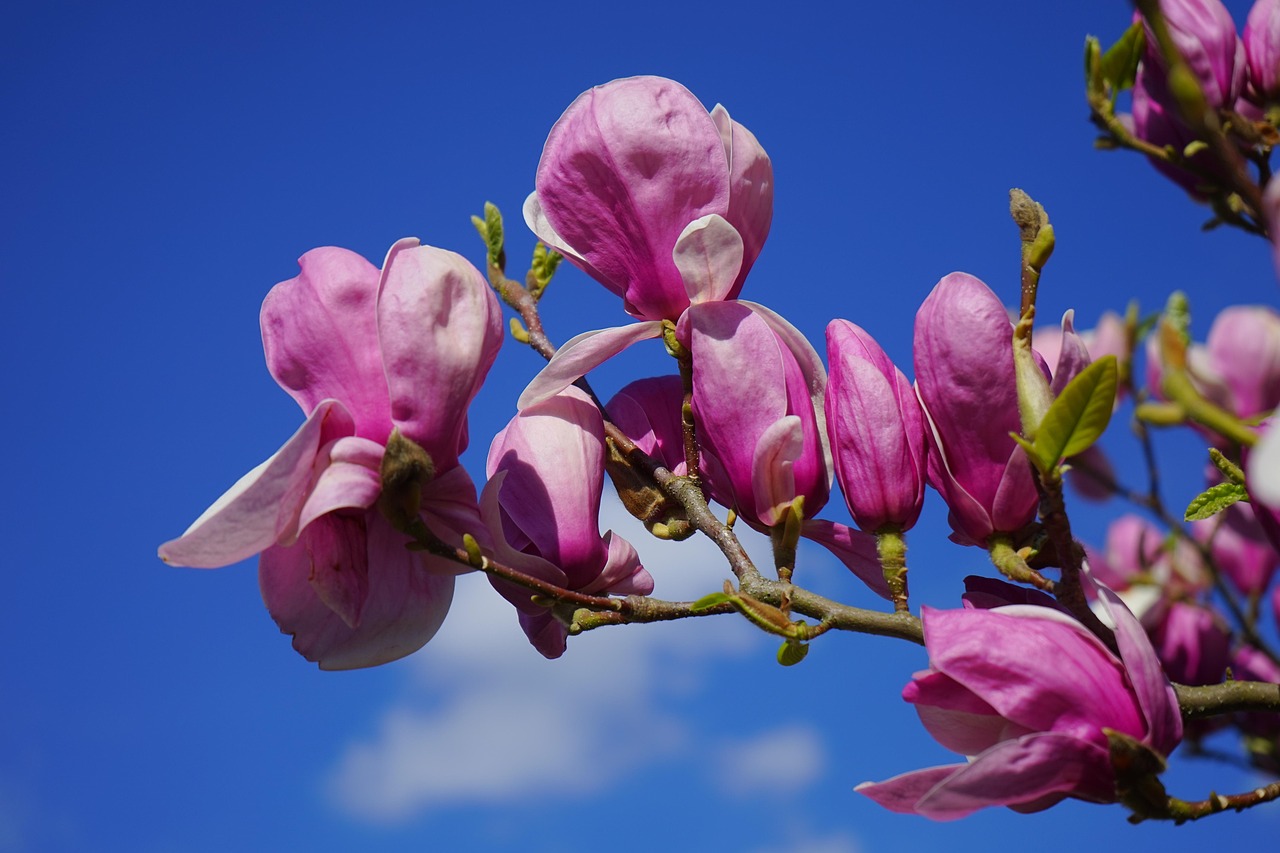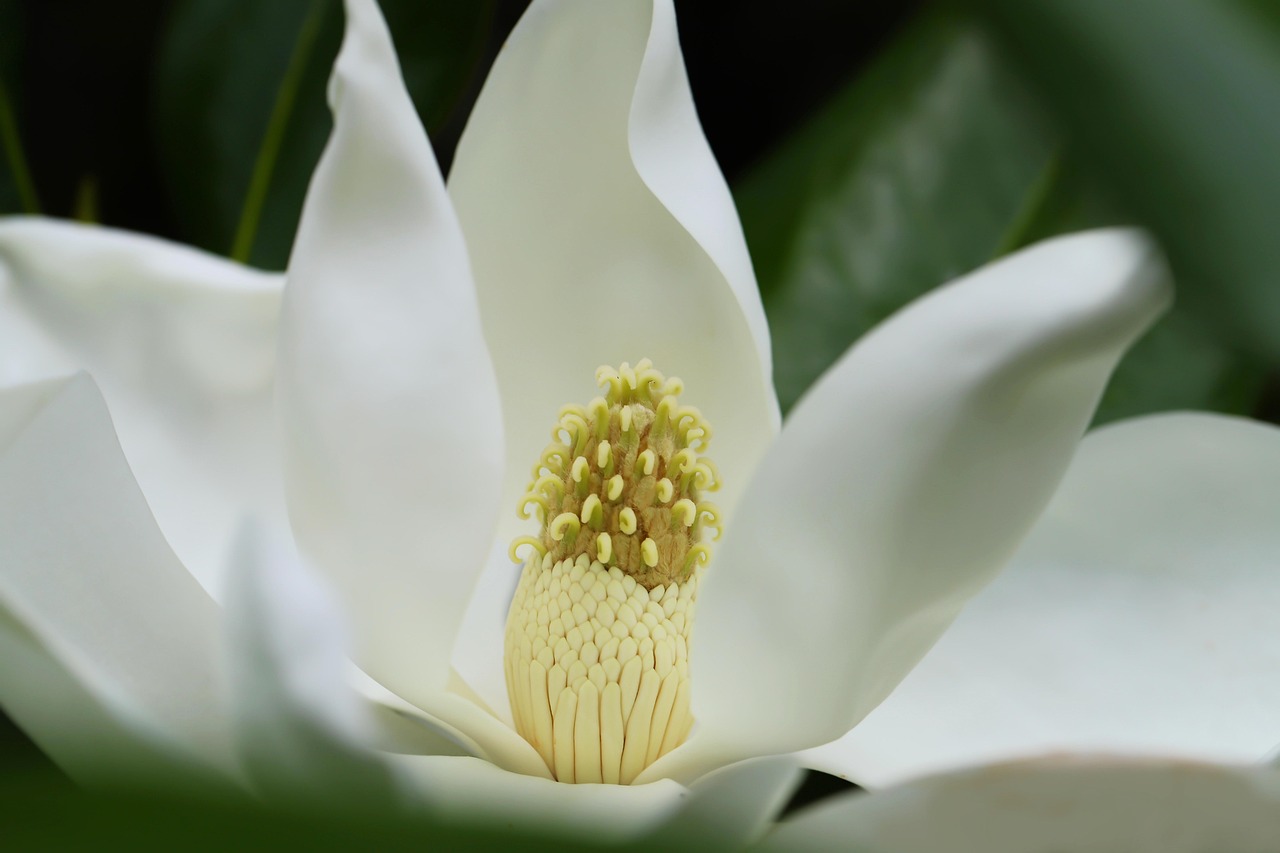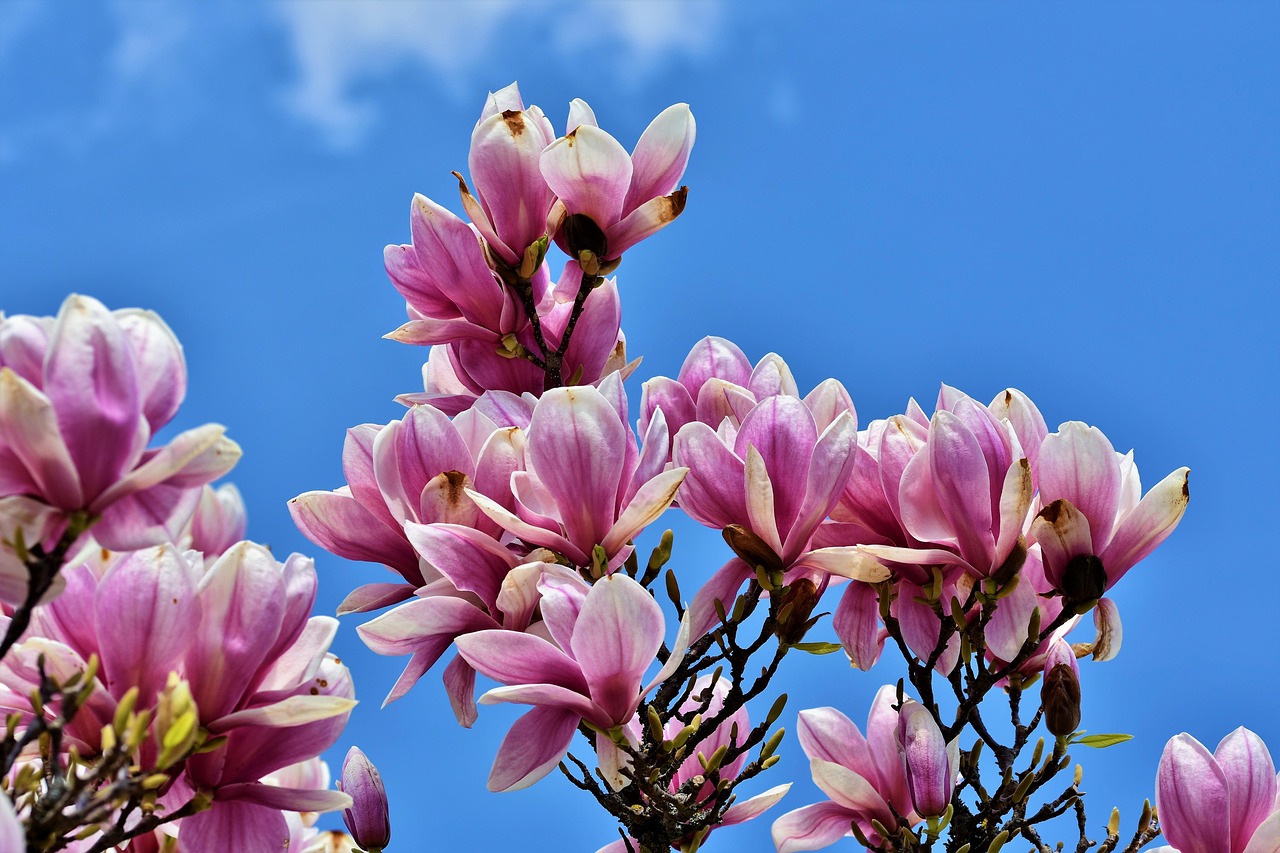Magnolia trees require proper care for healthy growth, including suitable sunlight, well-drained soil, and regular watering. They thrive best in zones 5 to 9. Pruning should be minimal, focusing on removing dead or damaged branches.
Understanding Magnolia Trees

Magnolia trees are beloved for their stunning blooms and lush foliage. These trees belong to the Magnoliaceae family and are known for their large, fragrant flowers that often appear before the leaves. With over 200 species, magnolias vary greatly in size, shape, and flower color. They can be deciduous or evergreen, making them versatile additions to many landscapes.
Native to the Americas, Asia, and parts of Europe, magnolias have a rich history. They symbolize dignity and nobility and are often associated with Southern gardens in the United States. Their striking beauty and unique characteristics make them a popular choice for gardeners and landscapers alike.
Types of Magnolia Trees
There are several types of magnolia trees, each offering unique features. Here are some of the most popular varieties:
- Southern Magnolia (Magnolia grandiflora): This evergreen tree is known for its large, glossy leaves and fragrant white flowers. It can grow up to 80 feet tall.
- Star Magnolia (Magnolia stellata): A smaller deciduous tree that typically reaches 15 to 20 feet in height. It is famous for its star-shaped white flowers that bloom in early spring.
- Saucer Magnolia (Magnolia x soulangeana): This hybrid is known for its large, cup-shaped flowers that can be pink, purple, or white. It grows between 20 to 30 feet tall.
- Cucumber Tree (Magnolia acuminata): This species can reach heights of 50 to 70 feet. It has yellow-green flowers and is valued for its wood.
Basic Care Requirements
Caring for magnolia trees involves understanding their specific needs. Here are some essential care tips:
- Sunlight: Magnolias prefer full sun to partial shade. Ensure they receive at least six hours of direct sunlight each day.
- Soil: They thrive in well-drained, moist soil enriched with organic matter. Avoid heavy clay soils that retain water.
- Watering: Regular watering is crucial, especially during dry spells. Young trees need consistent moisture for optimal growth.
- Fertilization: A balanced fertilizer can help promote healthy growth. Apply it in early spring before new growth begins.
Growth Tips for Magnolia Trees
To ensure your magnolia tree flourishes, consider the following growth tips:
- Planting Location: Choose a location with plenty of space for the tree to grow. Avoid crowded areas where branches may be restricted.
- Mulching: Apply a layer of mulch around the base of the tree. This helps retain moisture and suppress weeds.
- Pruning: Prune only as necessary to maintain shape and remove dead or diseased branches. The best time to prune is in late winter or early spring.
- Pest Control: Monitor for pests such as scale insects and aphids. Treat infestations promptly with insecticidal soap or horticultural oils.
Nutritional Needs
Nutrient management is vital for magnolia health. Here is a simple table outlining essential nutrients and their functions:
| Nutrient | Function |
|---|---|
| Nitrogen | Promotes leafy growth. |
| Phosphorus | Encourages flowering and root development. |
| Potassium | Enhances overall plant health and disease resistance. |
Understanding these nutrients will help you provide the right care for your magnolia tree. By meeting their basic needs, you can enjoy the beauty and elegance these trees bring to your garden.
Common Pests and Diseases
Like all plants, magnolia trees can be affected by various pests and diseases. Recognizing these threats early is crucial for effective management and maintaining the health of your tree. Here are some common issues you might encounter:
Pests
- Scale Insects: These tiny pests attach themselves to the stems and leaves, sucking sap and weakening the plant. They can cause yellowing leaves and stunted growth.
- Aphids: Aphids are small, soft-bodied insects that also feed on sap. They can lead to curling leaves and may produce a sticky substance called honeydew, which attracts other pests.
- Spider Mites: These microscopic pests thrive in dry conditions. They can cause leaf discoloration and webbing on the plant.
- Butterfly Larvae: Certain caterpillars may feed on magnolia leaves, leading to holes and a ragged appearance.
Diseases
- Leaf Spot: This fungal disease causes dark spots on the leaves. It typically occurs in humid conditions and can lead to premature leaf drop if not treated.
- Cankers: Canker diseases can affect branches and stems, causing dieback. Signs include sunken areas on the bark and oozing sap.
- Root Rot: Overwatering or poorly drained soil can result in root rot. Symptoms include wilting leaves and stunted growth.
Preventive Measures
Preventing pests and diseases is often easier than treating them. Here are several proactive steps you can take to protect your magnolia tree:
- Regular Inspections: Routinely check your magnolia for signs of pests or disease. Early detection is key to successful treatment.
- Proper Watering: Water your tree appropriately to avoid over-saturation, which can lead to root rot.
- Good Air Circulation: Plant your magnolia in an area with good airflow. This reduces humidity and helps prevent fungal diseases.
- Neem Oil Treatment: Use neem oil as a natural pesticide to deter pests without harming beneficial insects.
Seasonal Care Guidelines

Caring for magnolia trees varies by season. Understanding what your tree needs throughout the year will help it thrive. Here are seasonal care guidelines:
Spring
Spring is a critical time for growth and blooming. Begin the season by:
- Applying a balanced fertilizer to promote healthy growth.
- Pruning any dead or damaged branches after flowering has finished.
- Watering regularly as new growth begins.
Summer
During summer, magnolias need consistent moisture. Ensure you:
- Water deeply, especially during hot, dry spells.
- Add mulch around the base to retain soil moisture and regulate temperature.
- Monitor for pests and treat infestations promptly.
Fall
As fall approaches, prepare your magnolia for winter. Key tasks include:
- Raking fallen leaves to prevent fungal diseases.
- Reducing watering as temperatures cool down.
- Inspecting for any signs of pests before winter dormancy.
winter
During winter, magnolia trees enter dormancy. Ensure proper care by:
- Avoiding heavy pruning during this time as it can stress the tree.
- Protecting young trees from harsh winds by wrapping trunks with burlap.
- Watering only when necessary if the ground is not frozen.
Choosing the Right Location
Selecting an appropriate location for planting magnolia trees is essential for their success. Consider these factors when choosing a site:
- Sun Exposure: Magnolias prefer full sun to partial shade. Ensure the chosen site gets adequate sunlight throughout the day.
- Space Requirements: Provide enough room for the mature size of the tree. Magnolias can grow large, so consider nearby structures or other plants.
- Soil Quality: Test the soil before planting. Magnolias thrive in rich, well-drained soils with a pH between 5.5 and 6.5.
A well-thought-out planting location will set the foundation for a healthy magnolia tree, allowing it to flourish in your landscape for years to come.

Propagation Methods for Magnolia Trees
Propagating magnolia trees can be a rewarding endeavor for gardeners and those looking to expand their collection. There are several methods to propagate magnolias, including seeds, cuttings, and layering. Each method has its own advantages and challenges.
Seed Propagation
Growing magnolias from seeds is a natural way to propagate these beautiful trees. However, the process requires patience and careful attention:
- Collecting Seeds: Seeds should be harvested in late summer or early fall when the cones begin to open. Be sure to choose seeds from healthy, mature trees.
- Stratification: Magnolia seeds often require stratification, which mimics winter conditions. Store seeds in a damp medium in the refrigerator for 30 to 60 days.
- Sowing Seeds: After stratification, sow the seeds in well-draining soil. Plant them about one inch deep and keep the soil moist.
- Germination Time: Germination can take several weeks to months, so patience is key. Keep the seedlings in a warm, sunny location.
Cutting Propagation
Taking cuttings is another effective way to propagate magnolias. This method allows you to create clones of the parent plant:
- Selecting Cuttings: Choose healthy stems from the current year’s growth. Semi-hardwood cuttings are ideal, measuring about 4 to 6 inches long.
- Preparing Cuttings: Remove any leaves from the bottom half of the cutting. Dip the cut end in rooting hormone to encourage root formation.
- Planting Cuttings: Place the cuttings in a pot with well-draining soil. Water them thoroughly and cover with a plastic bag or dome to maintain humidity.
- Root Development: Keep the cuttings in a warm area with indirect light. Roots should develop within a few weeks; check periodically for moisture.
Layering Method
Layering is another propagation technique that involves encouraging roots to form on a stem while it is still attached to the parent tree:
- Selecting a Branch: Choose a low-hanging branch that can easily reach the soil. Select a healthy stem that’s about one year old.
- Girdling: Make a small incision on the underside of the selected branch. This will encourage root growth.
- Covering with Soil: Bury the wounded section in soil while leaving the tip exposed. Secure it with a stake if necessary.
- Monitoring Growth: Water regularly and check for root development. After roots have formed, cut the branch from the parent tree and transplant it.
Environmental Factors Affecting Magnolia Growth
Certain environmental factors play a significant role in the health and growth of magnolia trees. Understanding these factors can help you create ideal growing conditions:
Climate and Temperature
Magnolias thrive in temperate climates and generally prefer mild winters and warm summers:
- Hardiness Zones: Most magnolia species grow well in USDA zones 5 to 9, where winter temperatures do not drop below -20°F (-29°C).
- Temperature Sensitivity: Young trees are particularly sensitive to extreme cold. Protect them during severe cold snaps with mulch or wraps.
Soil Conditions
The right soil conditions are crucial for magnolias. Consider these factors when assessing soil quality:
- Drainage: Magnolias do not tolerate standing water or poorly drained soils. Ensure proper drainage by amending heavy soils with organic matter.
- Soil pH: Aim for slightly acidic soil with a pH between 5.5 and 6.5. Testing your soil can help determine if amendments are necessary.
Water Availability
Water is essential for magnolia trees, especially during their early growth stages:
- Irrigation Needs: Newly planted magnolias require regular watering until established. Deep watering encourages strong root development.
- Drought Tolerance: Once established, many magnolia species are moderately drought-tolerant, but they still benefit from occasional watering during dry spells.
Caring for Young Magnolia Trees

>The first few years of a magnolia tree’s life are vital for establishing a strong foundation. Here are essential care tips for young trees:
- Watering Schedule: Maintain consistent moisture without overwatering. Deep watering every week is often sufficient.
- Mulching: Apply mulch around the base to retain moisture and suppress weeds. Keep mulch away from the trunk to prevent rot.
- Pest Monitoring: Regularly check for signs of pests or diseases that can affect young trees. Early intervention is crucial.
- Staking if Necessary: If young trees are tall or planted in windy areas, staking may be necessary to provide support until they establish roots.
Caring for young magnolia trees requires attention and dedication but leads to stunning results as they grow into magnificent specimens in your landscape.
Common Myths about Magnolia Trees
Despite their beauty and popularity, there are several myths surrounding magnolia trees that can lead to misunderstandings about their care and growth. Here, we will debunk some of these common misconceptions:
- Magnolia Trees Are Low Maintenance: While magnolias are hardy, they still require regular care, including proper watering, pest management, and occasional pruning.
- All Magnolias Are Evergreen: Many people believe all magnolia species are evergreen. In reality, some varieties are deciduous and lose their leaves in the fall.
- They Are Only Suited for Warm Climates: Although many magnolia species thrive in warmer zones, several varieties are well-suited for cooler climates as well.
- Magnolias Can Be Planted Anywhere: Magnolias have specific soil and sunlight requirements. Planting them in unsuitable conditions can lead to poor health or death.
Landscaping with Magnolia Trees
Magnolia trees can serve as stunning focal points in various landscaping designs. Their impressive size, fragrant flowers, and attractive foliage make them versatile additions to any garden. Here are some ideas for incorporating magnolias into your landscape:
Focal Points
Planting a large magnolia tree as a centerpiece can draw the eye and create an inviting atmosphere. Consider the following:
- Entryway Design: Use a magnolia to frame an entrance or pathway, providing a grand welcome to visitors.
- Garden Borders: Plant them along borders to add height and beauty to your garden’s perimeter.
Companion Planting
Magnolias can be paired with various plants to create a harmonious landscape:
- Flowering Shrubs: Combine magnolias with flowering shrubs like azaleas or rhododendrons for a vibrant spring display.
- Ground Covers: Use low-growing ground covers such as creeping thyme or hostas around the base of the tree to prevent weed growth and enhance visual appeal.
Privacy Screens
Larger magnolia trees can also be used to create natural privacy screens in your yard:
- Dense Planting: Plant multiple magnolias in a row to form a dense barrier that blocks noise and enhances privacy.
- Layering Plants: Incorporate smaller evergreen plants in front of magnolias for added texture and coverage throughout the year.
Final Thoughts
Caring for magnolia trees involves understanding their unique needs and characteristics. From selecting the right species for your climate to ensuring proper maintenance, magnolias can be rewarding additions to any landscape. With vibrant blooms and lush foliage, they not only enhance the aesthetic appeal of gardens but also provide benefits such as shade and habitat for wildlife.
By debunking common myths, recognizing the importance of proper care, and incorporating them thoughtfully into your landscape design, you can enjoy the beauty of magnolia trees for generations. Whether you choose a Southern Magnolia for its grandeur or a Star Magnolia for its delicate flowers, these trees will add elegance and charm to any outdoor space.
The journey of growing a magnolia tree is one filled with anticipation as you watch it mature, bloom, and transform your garden. With commitment and knowledge, you can cultivate healthy magnolias that become cherished features of your home landscape.
